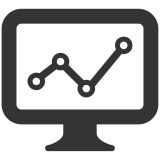In this article:
What is a Biostatistics Degree?
A biostatistics degree teaches students how to use math and statistics to solve problems related to health and medicine. It focuses on analyzing data to help understand things like how diseases spread, how effective treatments are, and what factors affect people’s health. The degree blends math with biology and healthcare, helping students learn to make sense of complex health data.
In the program, students learn how to collect data, design studies, and use statistical tools to analyze information from experiments or health surveys. They also learn how to interpret the results and make decisions based on that data. These skills are essential for research in areas like public health, medicine, and environmental health.
Program Options
Biostatistics programs come in different levels, allowing students to choose the best fit based on their career goals. Whether you’re looking for an entry-level education or advanced research training, there are several paths available.
- Bachelor’s Degree in Biostatistics: This undergraduate program introduces students to statistics, mathematics, and biology. It provides a foundation for analyzing health data and preparing for entry-level roles or further education.
- Master’s Degree in Biostatistics: A more advanced degree focusing on statistical methods, data analysis, and research design. Graduates can work as biostatisticians, data analysts, or research coordinators in healthcare and public health sectors.
- Ph.D. in Biostatistics: A doctorate-level program for those who want to specialize in advanced statistical modeling and research. Ph.D. graduates often work in academia, research institutions, or high-level policy-making roles.
- Master’s in Public Health (MPH) with Biostatistics Concentration: This program combines public health studies with biostatistics, preparing students for careers in epidemiology, healthcare management, or public health research.
- Graduate Certificates in Biostatistics: Short-term programs designed for professionals who want to strengthen their biostatistics skills. These certificates focus on applying statistical methods in medicine, research, and public health.
Skills You’ll Learn
Students in a biostatistics program develop a combination of analytical, mathematical, and research skills that are essential for analyzing health-related data.
- Statistical Analysis: Learn how to apply statistical methods to interpret health and medical data, helping researchers draw meaningful conclusions.
- Data Management: Gain experience in organizing, cleaning, and processing large datasets using statistical software like R, SAS, or Python.
- Epidemiological Research: Understand how to study disease patterns, risk factors, and health outcomes in populations.
- Mathematical Modeling: Develop models to predict health trends, drug effectiveness, and the impact of diseases on communities.
- Research Design: Learn how to structure experiments and clinical studies to ensure accurate and reliable results.
- Programming and Software Use: Gain proficiency in statistical programming languages and data visualization tools for analyzing complex health data.
- Critical Thinking: Learn to assess research findings, identify biases, and interpret results accurately for decision-making.
- Communication of Findings: Develop skills in presenting statistical results to scientists, policymakers, and healthcare professionals in a clear and understandable way.
What Can You Do with a Biostatistics Degree?
With a biostatistics degree, you can work in healthcare, research, government, and the pharmaceutical industry. Here are some career options:
- Biostatistician: Analyze medical and public health data to identify trends, evaluate treatments, and assist in clinical research. Work in hospitals, research institutions, or government agencies.
- Epidemiologist: Study disease patterns and risk factors in populations, helping to prevent and control health outbreaks. This role often requires additional training in public health.
- Clinical Research Coordinator: Manage clinical trials, ensuring that studies follow regulations and that data is collected accurately. This role is essential for developing new medical treatments.
- Data Analyst: Use statistical tools to analyze healthcare data, improve patient care, and assist in hospital decision-making. Work for hospitals, insurance companies, or government agencies.
- Statistician: Design and analyze drug trials to ensure the safety and effectiveness of new medications. Work in pharmaceutical companies and regulatory agencies.
- Actuary (Health & Insurance Focus): Assess healthcare risks and costs using statistical models, working for insurance companies and government agencies. Additional certification may be required.
- Professor / Researcher: Teach biostatistics at universities and conduct research to advance the field. A Ph.D. is typically required for this role.

